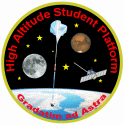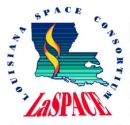



Payload 09 Information
Payload Flight Number:
Institution:
Payload Title:
Sheffield University Nova Balloon Lifted Telescope
Student Leader:
Faculty Advisor:
Payload class:
Large
Payload ID Number:
09
Mass:
Current:
Serial Downlink:
Analog Downlink:
Serial Commands:
Discrete Commands:
Payload Specification & Integration Plan
Due: 06/22/2018
Delivered:
Payload Integration Certification
Scheduled: 07/27/2018
Actual:
Flight Operation Plan
Due: 07/19/2018
Delivered:
Final Flight / Science Report
Due: 12/07/2018
Delivered:
Abstract:
Sun surveillance from the ground is often difficult as the thick atmosphere of the Earth blocks and distorts much of the incoming light. Learning about the Sun is critical in modern society, when solar flares have the potential to cripple telecommunication and global navigation systems. In the UK alone, €22mn was invested in the Space Situational Awareness program emphasising the need to better understand and predict solar events. Project SunbYte (Sheffield University Nova Balloon Lifted Telescope) aims to revolutionise the industry of solar observations by using a high-altitude balloon to lift a telescope to an altitude of 25-35km, where SunbYte has the potential to capture images of much better quality. As the existing ground and space telescopes are large, complex and expensive, the number of scientists who have access to such resources are quite limited. Even though experimental studies using high-altitude balloon telescopes have been previously conducted, these are, in terms of cost, inaccessible to many mainstream research institutions across the world. Combining the latest practices in manufacturing, astrophysics science and engineering, the team aims to deliver a low cost high quality method of imaging the Sun. The experiment was launched on BEXUS 25 from ESRANGE, Sweden in Oct 2017 as part of the REXUS/BEXUS programme. This document will discuss the new design for launch on HASP based on the lessons learnt.
Payload Application:
09_US@UK_Application_Review_Response.pdf 11_US@UK_HASP2018_Flight_Application.pdf
Payload Integration Plan:
|